June 6th, 2024
13minute read
Ed.
In todays article, Tom Laemlein describes the nightmarish German defenses that these heroes faced.
The Luftwaffe never seriously threatened the invasion beaches.
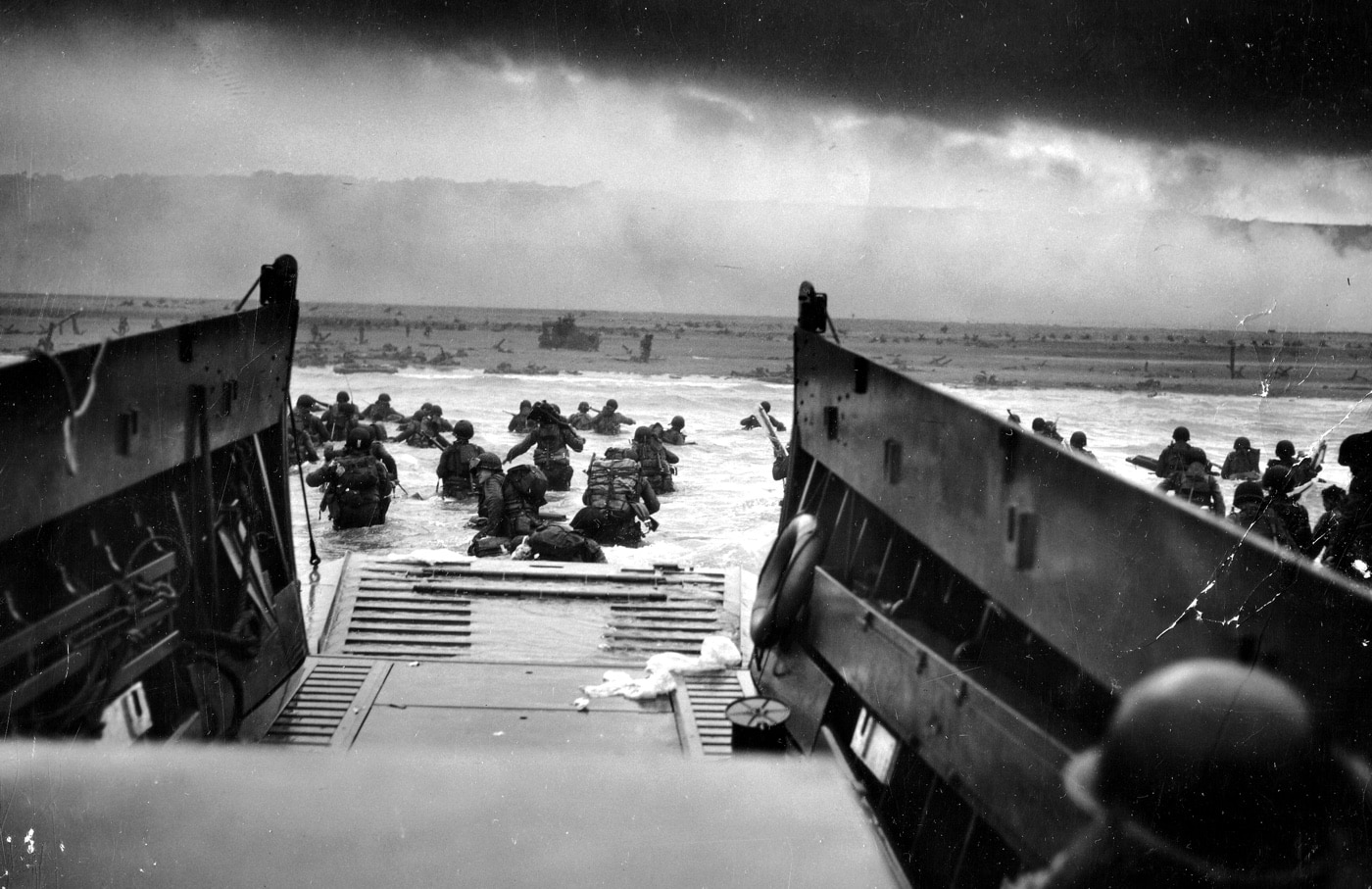
Operation Neptune, often called D-Day, was the Allied offensive to break the Atlantic Wall. With Allied forces still advancing in Italy, the landings in Normandy were critical to breaking Germany.
Victory on the beaches at Normandy was a huge win for Allied combined arms.
Despite air and naval superiority, the Atlantic Wall was not easy to crack.
The unique weapons designed for D-Day would have a lasting impact on the road to Berlin.
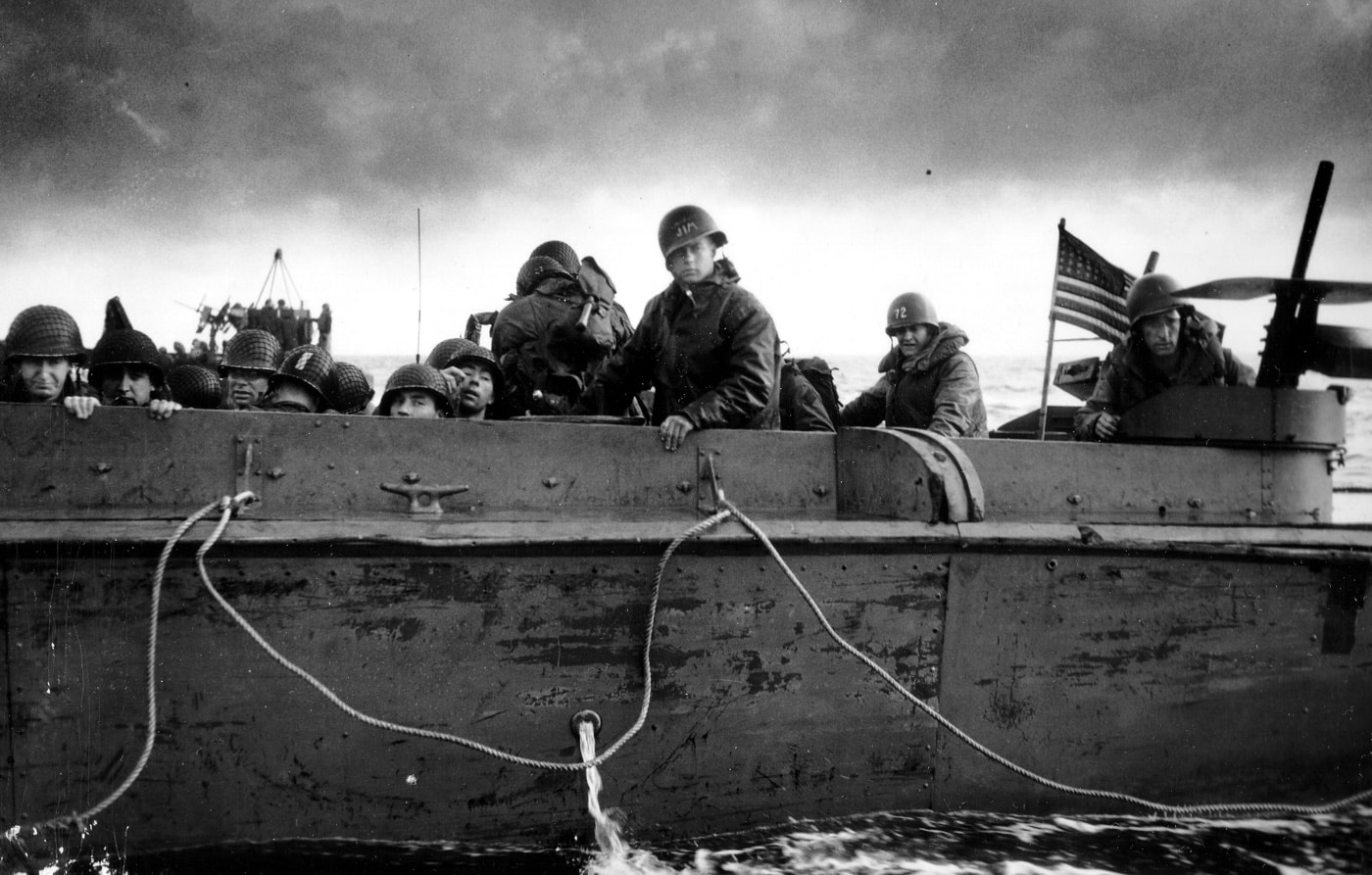
American troops ride in a Higgins Boat toward Normandy’s beaches. Higgins Boats, officially namedlanding craft vehicle personnelor LCVP, were essential to Operation Neptune’s success. Image: NARA
Of the 5,000-man Canadian raiding force, 64% were casualties.
Of the 1,000 British commandos, 247 were lost.
A total of 30 of the new Churchill tanks deployed at Dieppe were lost.
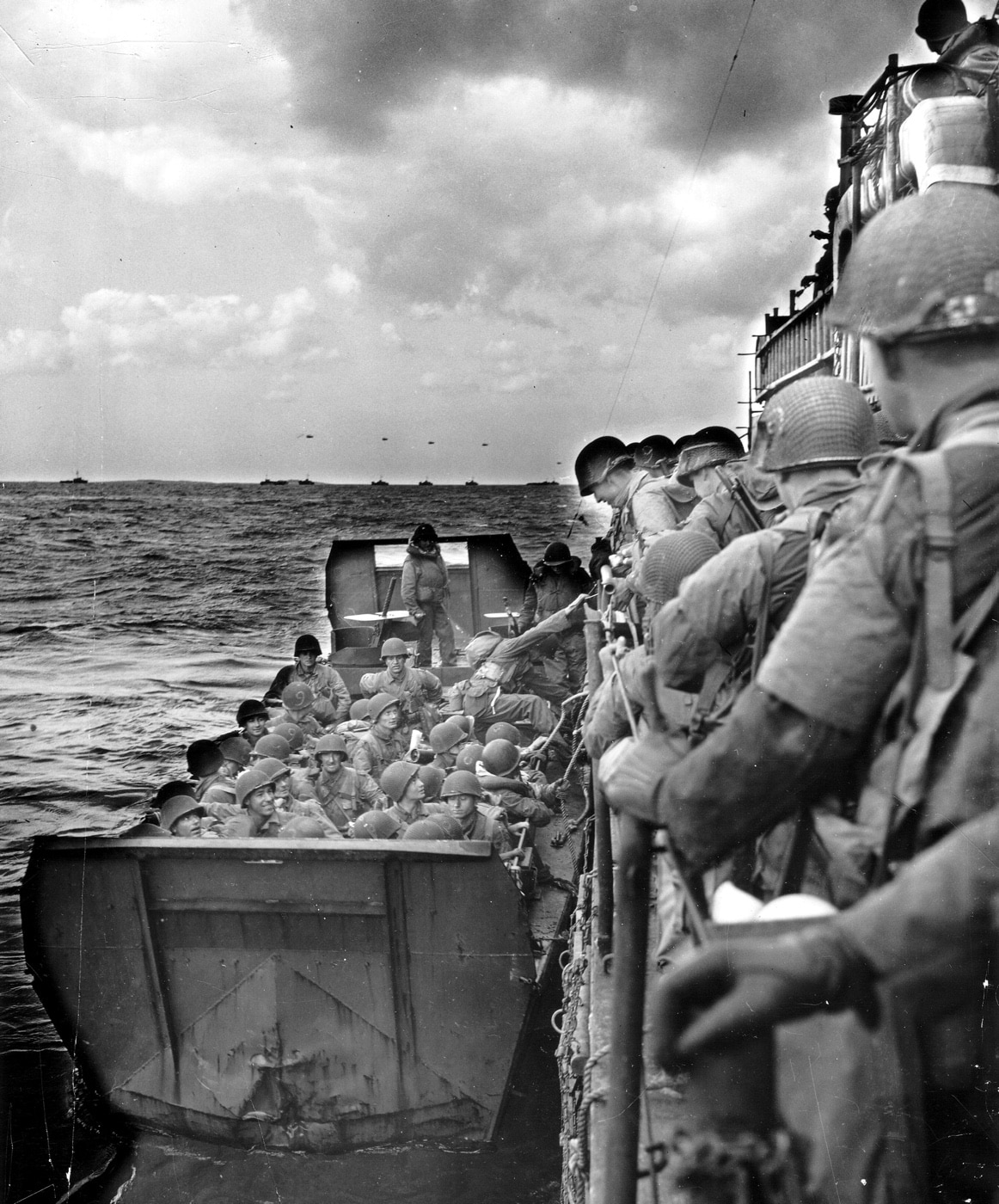
American troops board a Higgins Boat ahead of the amphibious assault on D-Day. While the men would pay a heavy price, they would prevail against the enemy. Image: NARA
The Royal Navy lost a destroyer as well as 33 landing craft.
It was a difficult day with hard lessons learned on both sides.
The impact on the D-Day landings less than 22 months later, was incalculable.
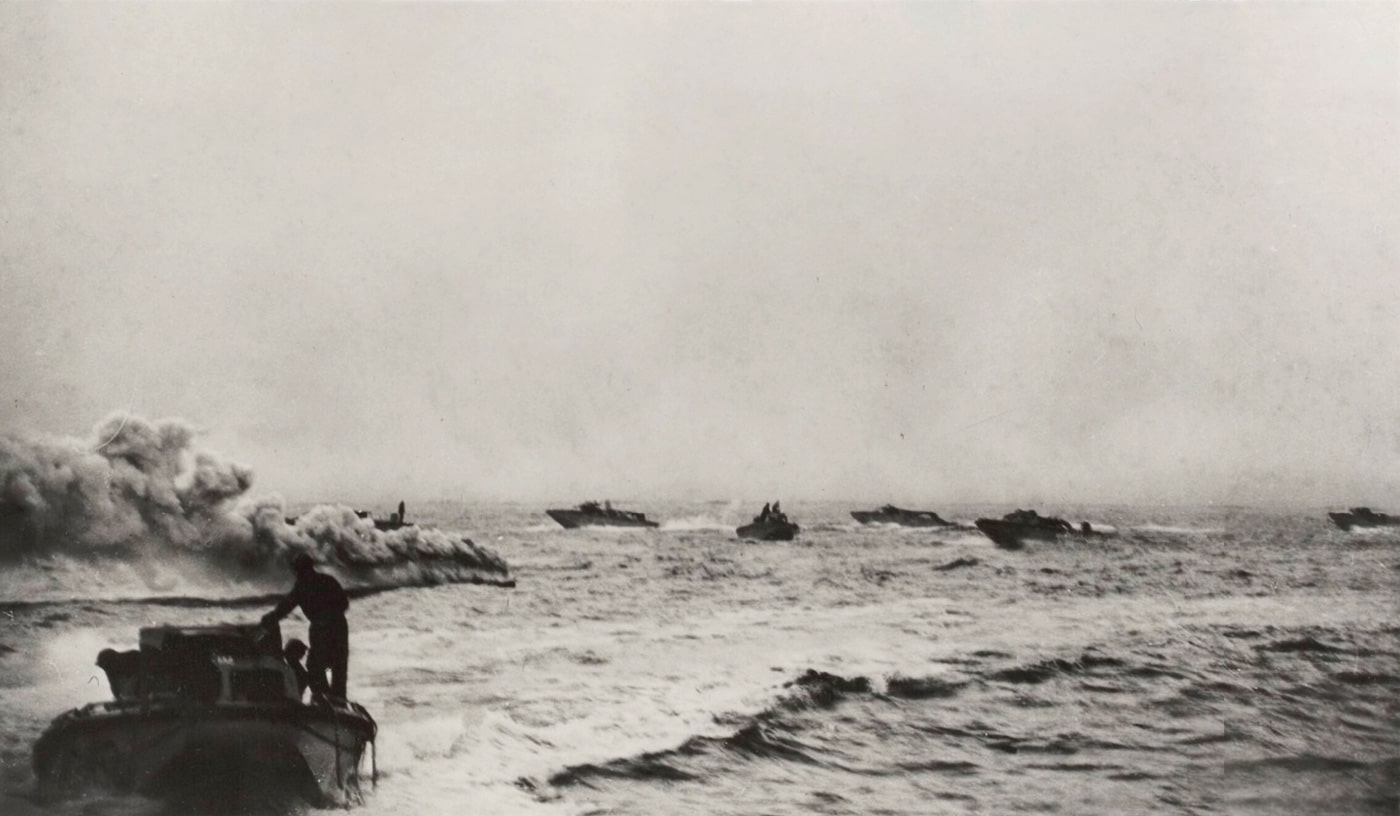
Allied forces, led by Canadian troops, made amphibious landings at Dieppe, France. The men were under continuous heavy artillery fire and attacks by German Luftwaffe dive bombers.
Just as we evaluate the experience for the future, so will the enemy.
Perhaps he will do this to an even greater extent because he has paid so dearly for it.
U.S. Studies of German Defenses
After Dieppe, the Germans expanded their efforts at creating fixed fortifications.
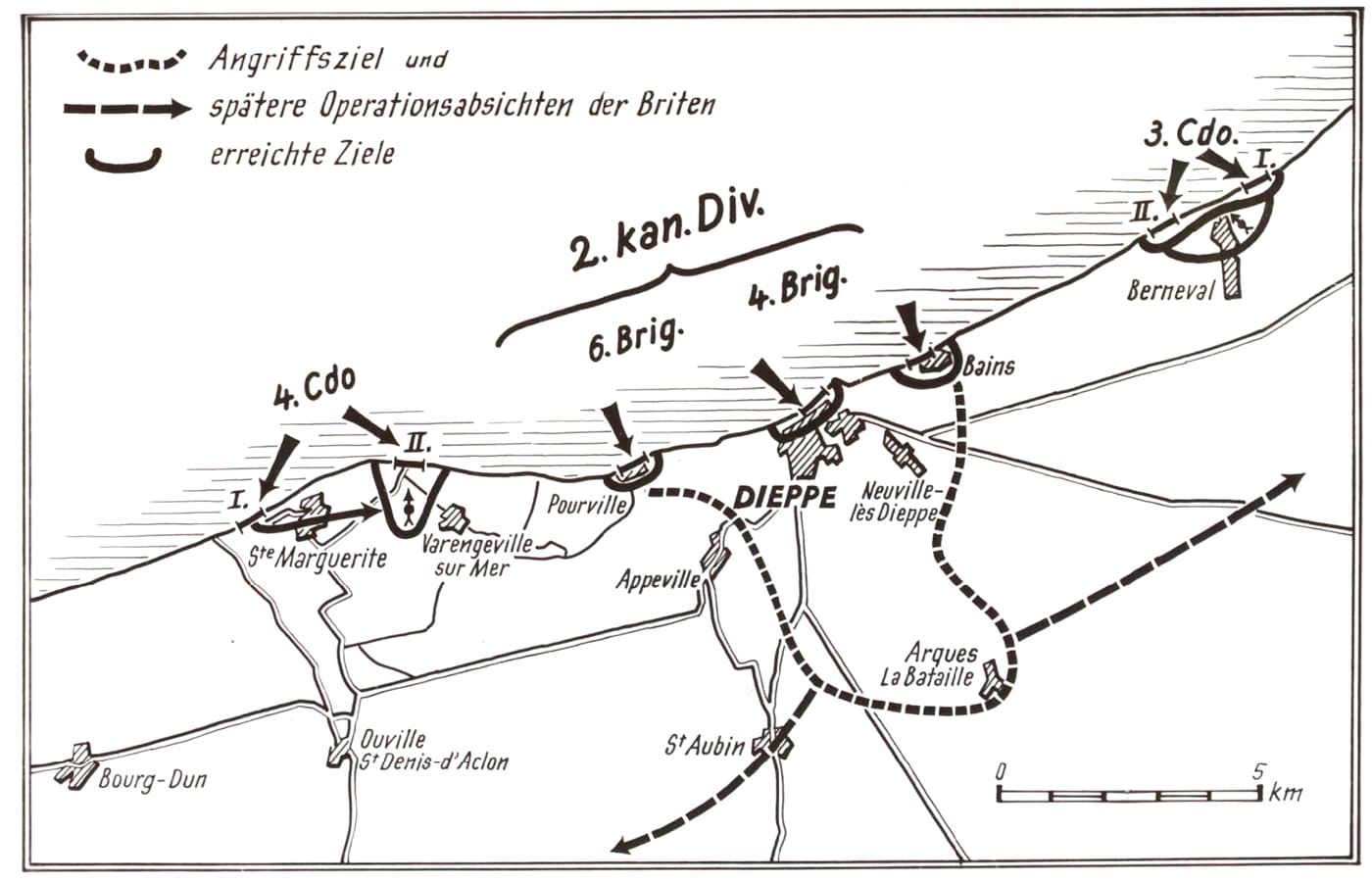
This German map made after the Dieppe Raid shows where the main Canadian forces landed along with the locations of the commando attacks.
A similar title Utah Beach to Cherbourg was produced shortly afterwards.
Both studies provide detailed descriptions of the German beach defenses based on pre-invasion intel and after-action assessments.
Omaha Beach
The enemy recognized that the Omaha sector was more favorable for attack from the sea.
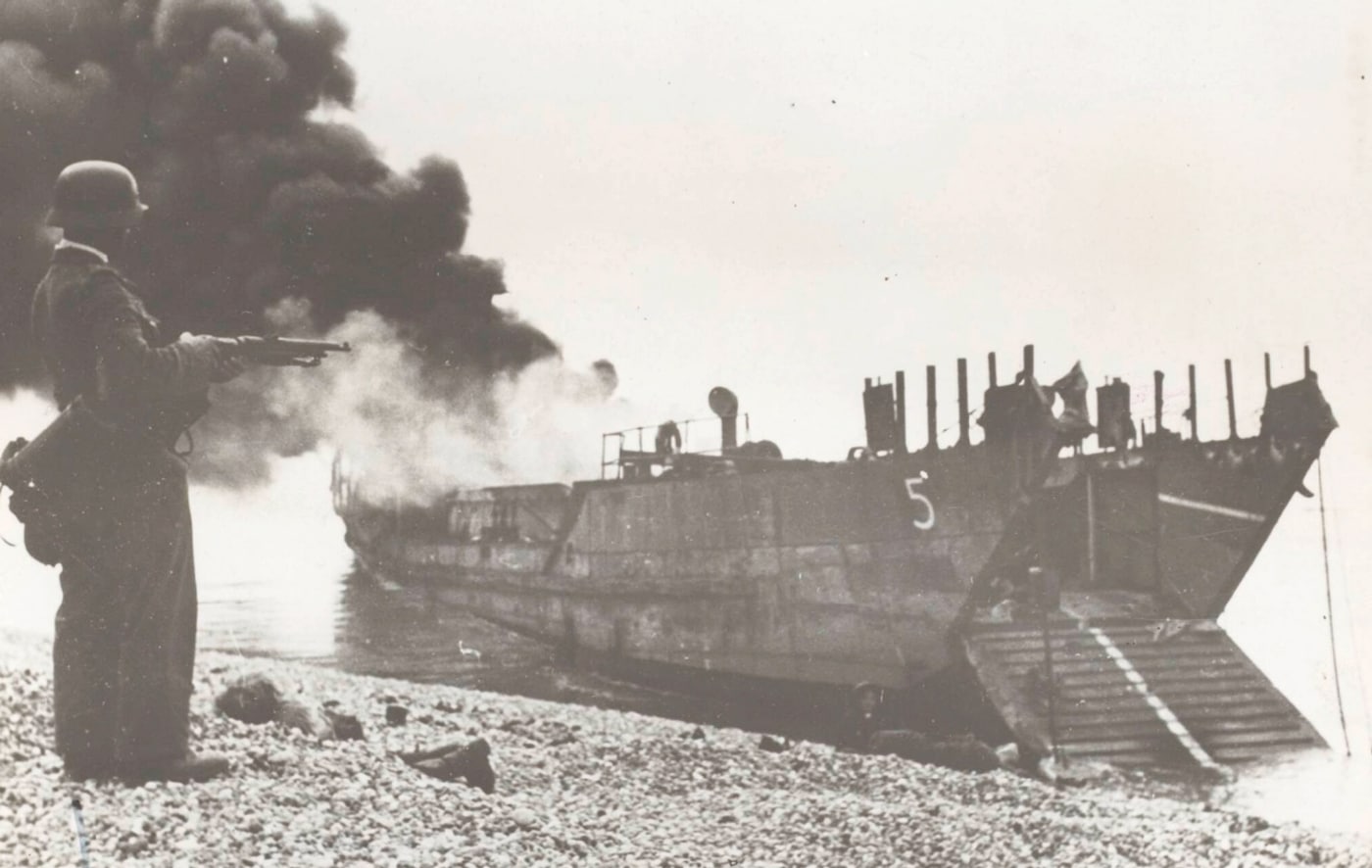
In the aftermath of the failed Dieppe Raid, a German soldier stands on the beach watching a British landing craft burn.
Consequently, 12 strongpoints were constructed in a way to bring direct fire on the beach.
The main support girders were 10 feet high, and waterproof Teller mines were lashed to the uprights.
This belt was found to be more formidable than had been anticipated.
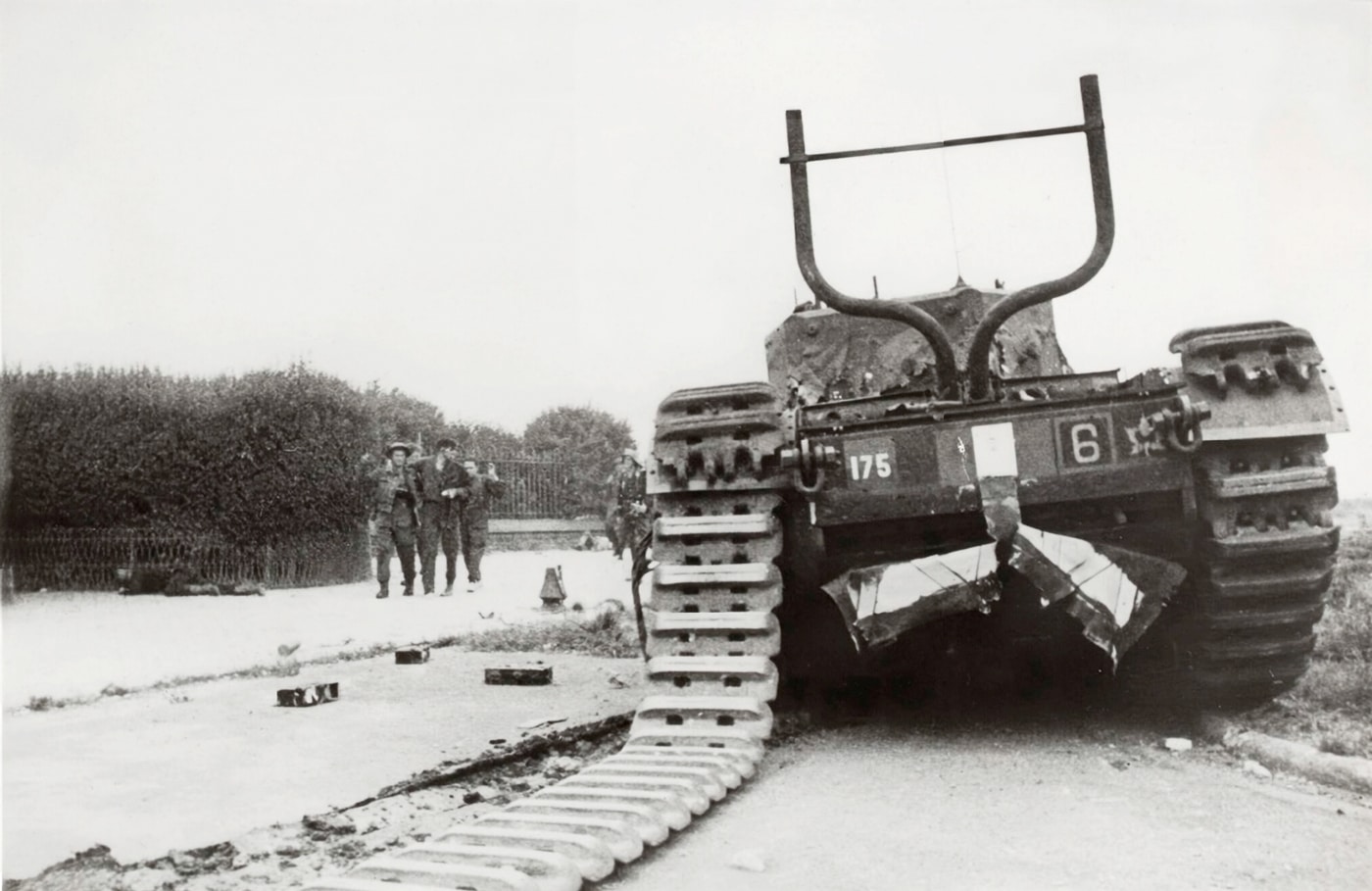
German troops march Canadian POWs by a destroyed Churchill tank from the Dieppe operation. Many Allied tanks were stuck on the beach and destroyed. This was a harsh lesson that informed planning for Operation Neptune.
None of these bands were continuous.
Instead, the elements were staggered at irregular intervals.
There were no mines in the tidal sands.

The Dieppe Raid was a disaster. Allied losses were high — more than 6,200 personnel were wounded, captured or killed. All landed tanks were lost as well as a destroyer, 33 landing craft and 100+ planes.
Some explosive charges were covered by rock and set off by trip wire, sometimes buried in the concertina.
The elements were connected with each other and with underground quarters and magazines by deep trenches or by tunnels.
The Omaha sector was not strongly defended by coastal batteries of heavier guns.

American troops wade onto the beach during the D-Day landings. Known as Operation Neptune, the amphibious assaults were part of the opening moves of Operation Overlord. Image: NARA
Mortar positions were sometimes included in the strong points but were more frequently placed behind the bluffs.
Utah Beach
Man-made defenses along the coast took various forms.
At the beginning of 1944, construction activity markedly increased on the defensive belt.
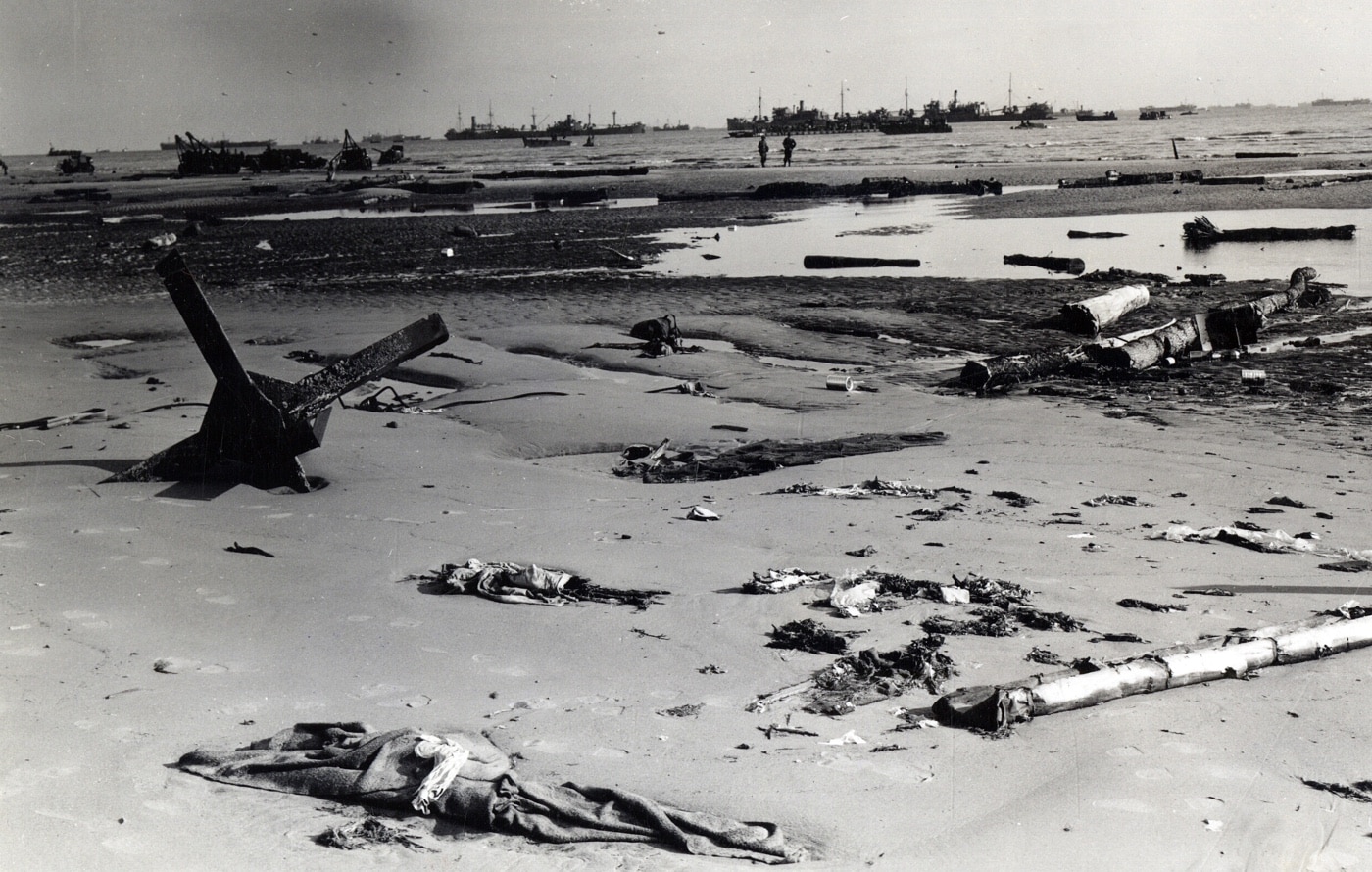
Beach obstacles were effective on the beaches of Normandy. However, they were not enough to stop Allied troops from establishing a beachhead and beginning the liberation of Europe. Image: NARA
Rows of obstacles had been emplaced on the beach from 50 to 130 yards to seaward.
About two miles inland on the coastal headlands behind Utah Beach were several coastal and field artillery batteries.
The most formidable batteries were located at Crisbecq and St. Martin-de-Varreville.

Similar to “Rommel’s Asparagus” used to impede Allied airborne and glider landings, wooden logs with anti-tank Teller mines were placed on landing beaches. This appears to be a Tellermine 42. Image: NARA
As expected, obstacles consisted mainly of steel and concrete pikes, some steel tetrahedra, and hedgehogs.
As it turned out, the actual impact of these weapons on D-Day was minimal.
The 3rdCanadian Division used man-portable Lifebuoy flamethrowers in a successful attack on fortified houses in Tierceville.
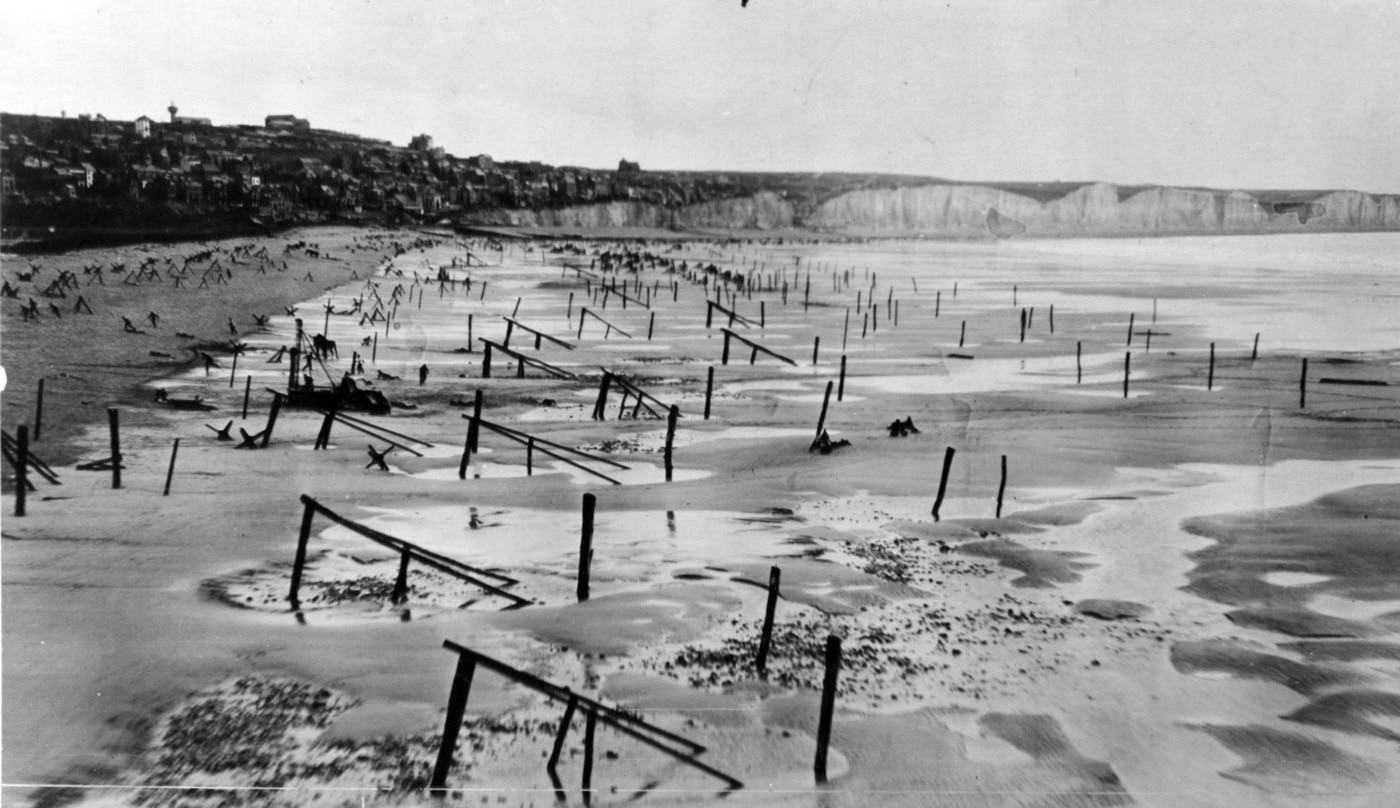
The cheapest and easiest to build obstacles used by the Germans were the anti-boat ramps made of tree-trunks. Mixed in are Teller mines attached to wooden poles. Image: NARA
Two three-tank units of British Churchill Crocodile flame tanks landed on D-Day.
Final Thoughts
With eight decades between us and Operation Neptune, the world has changed significantly.
After the war, Germany denounced National Socialism and is considered a strong ally of the United States.
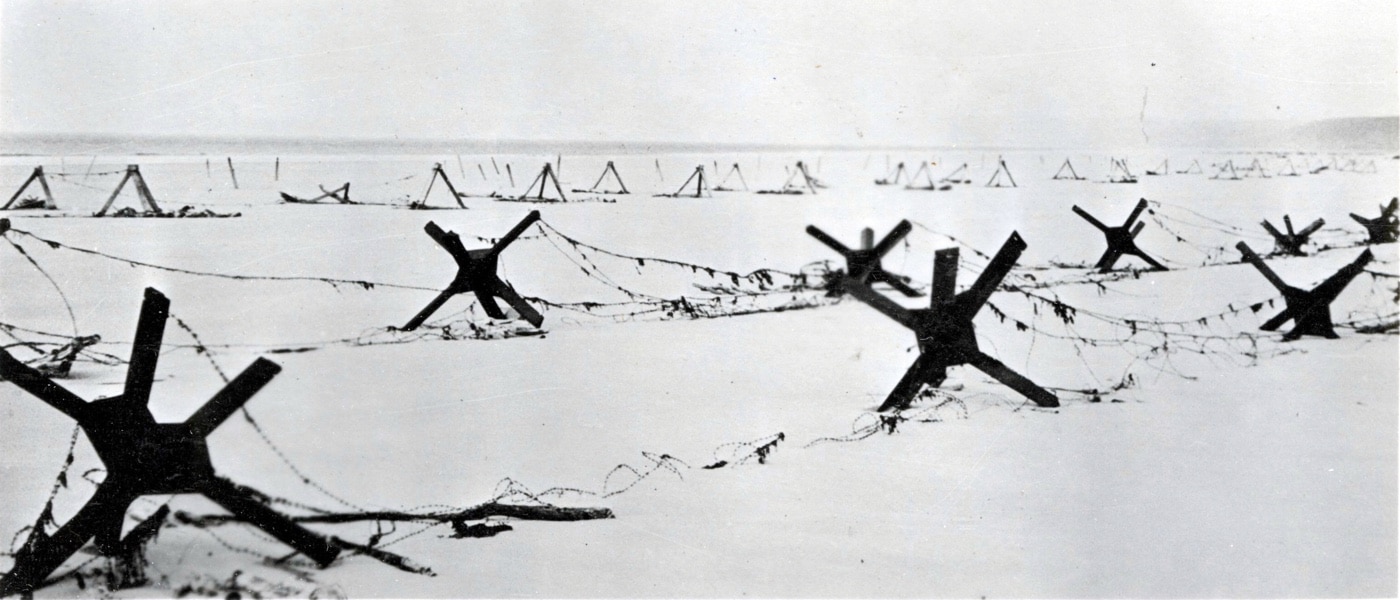
Upon testing, Germany determined the Czech hedgehogs (foreground) were more effective than wooden poles. Barbed wire and mines were often attached to the hedgehogs. Image: NARA
The world has seen unprecedented advancements in technology, medicine, science, energy, agriculture and freedom.
Take a moment to remember them for without their courage the world might be an eternally darker place.
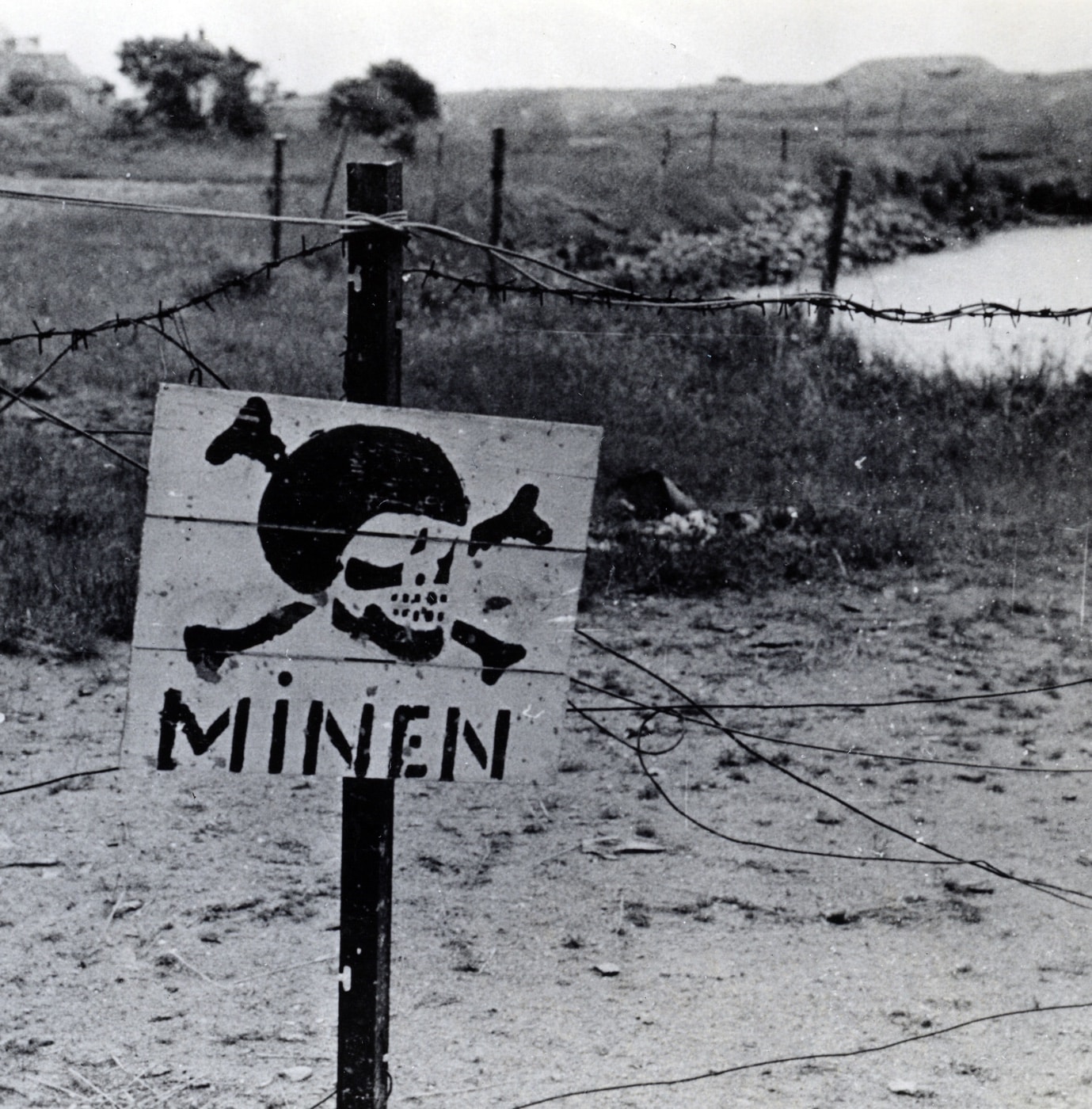
Minefields were thickly sown across Normandy. Occasionally the signs were a ruse, but there was only one way to find out the truth. Image: NARA
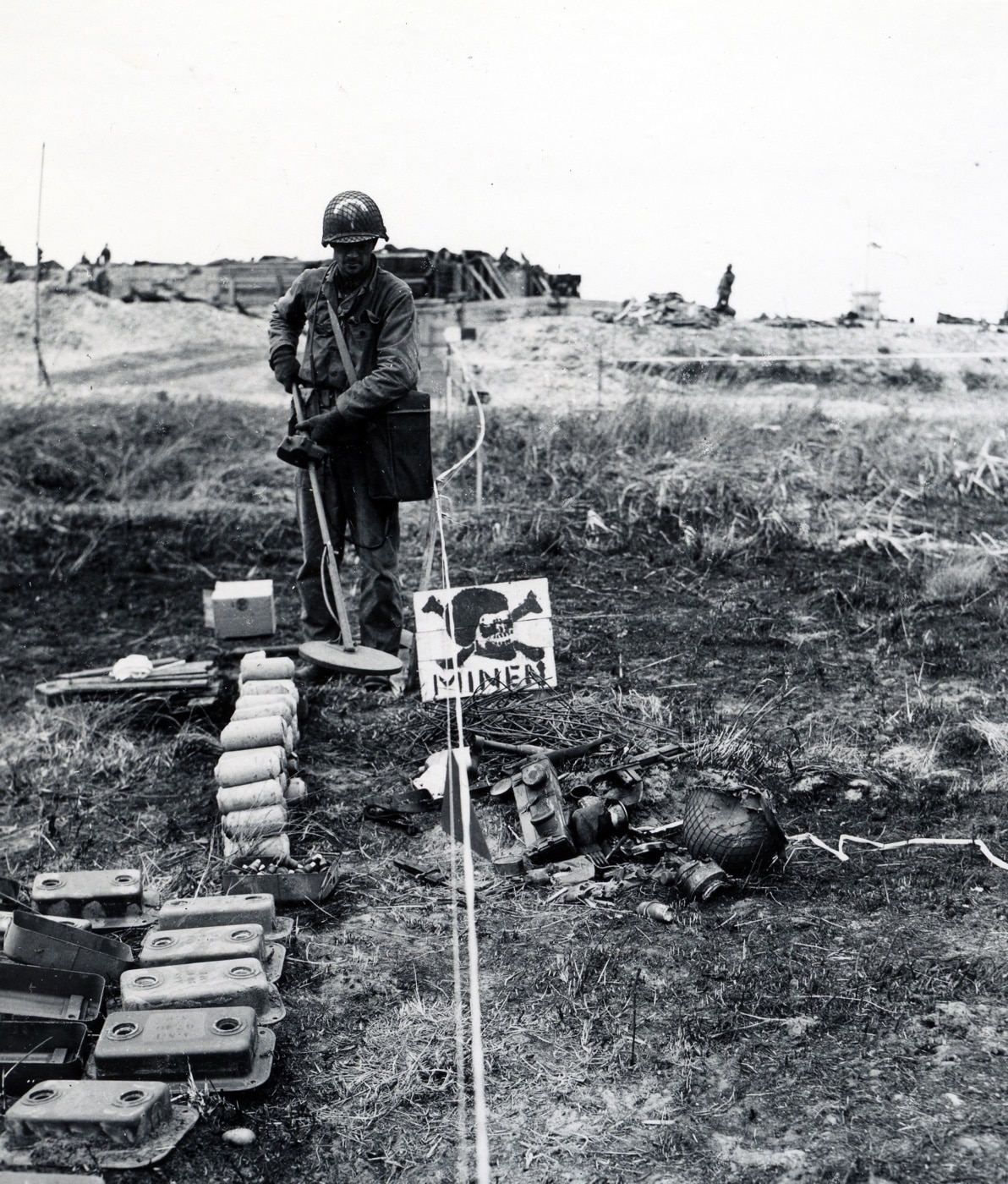
A U.S. soldier sweeps the area for mines near an invasion beachhead. The engineers used white tape lines to mark safe areas when minesweeping. Image: NARA
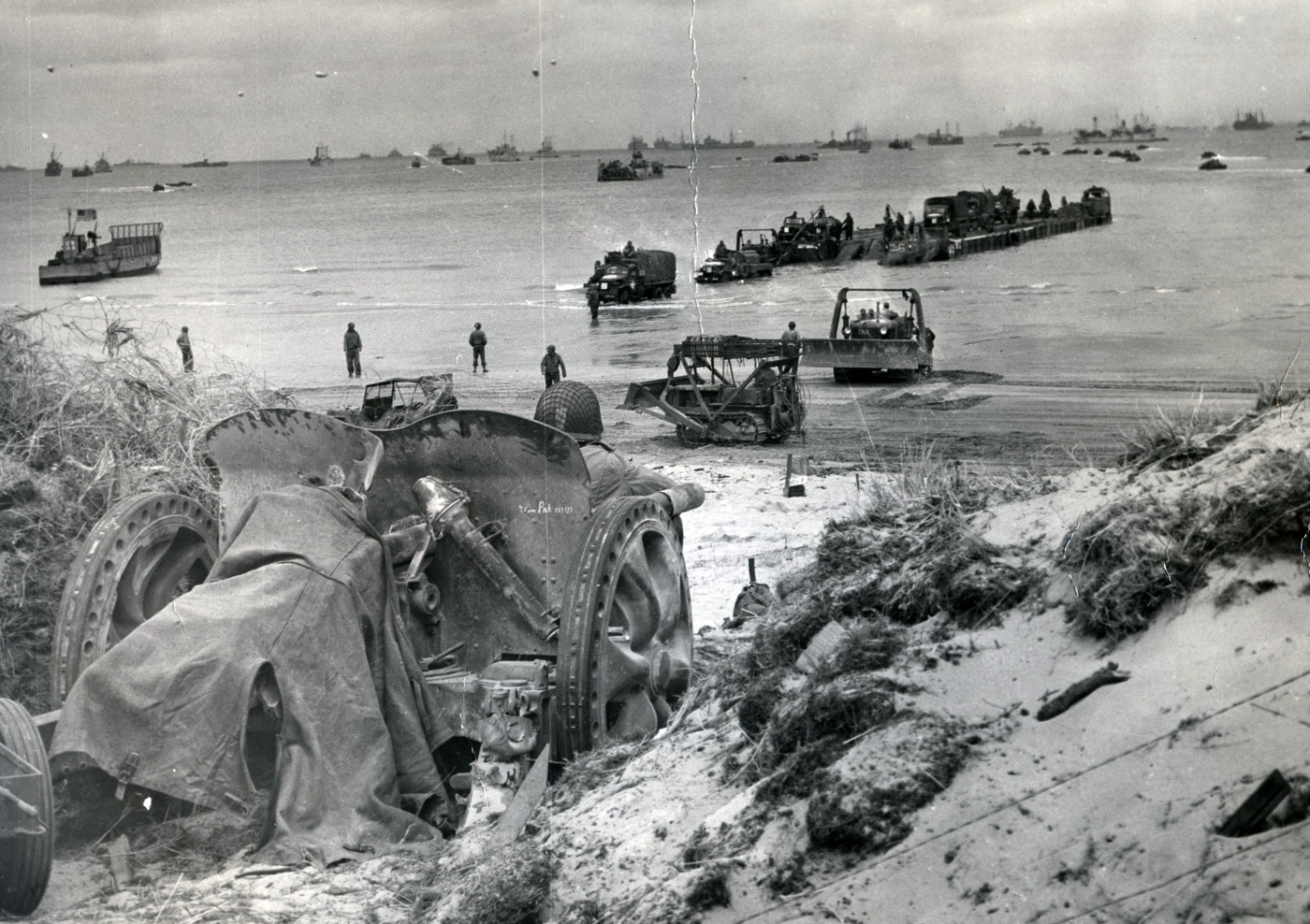
This French 47mm SA mle 1937 anti-tank gun was captured by the Germans and renamed the 4.7 cm Pak 181(f). This weapon was used against Allied troops as they landed on D-Day. NARA
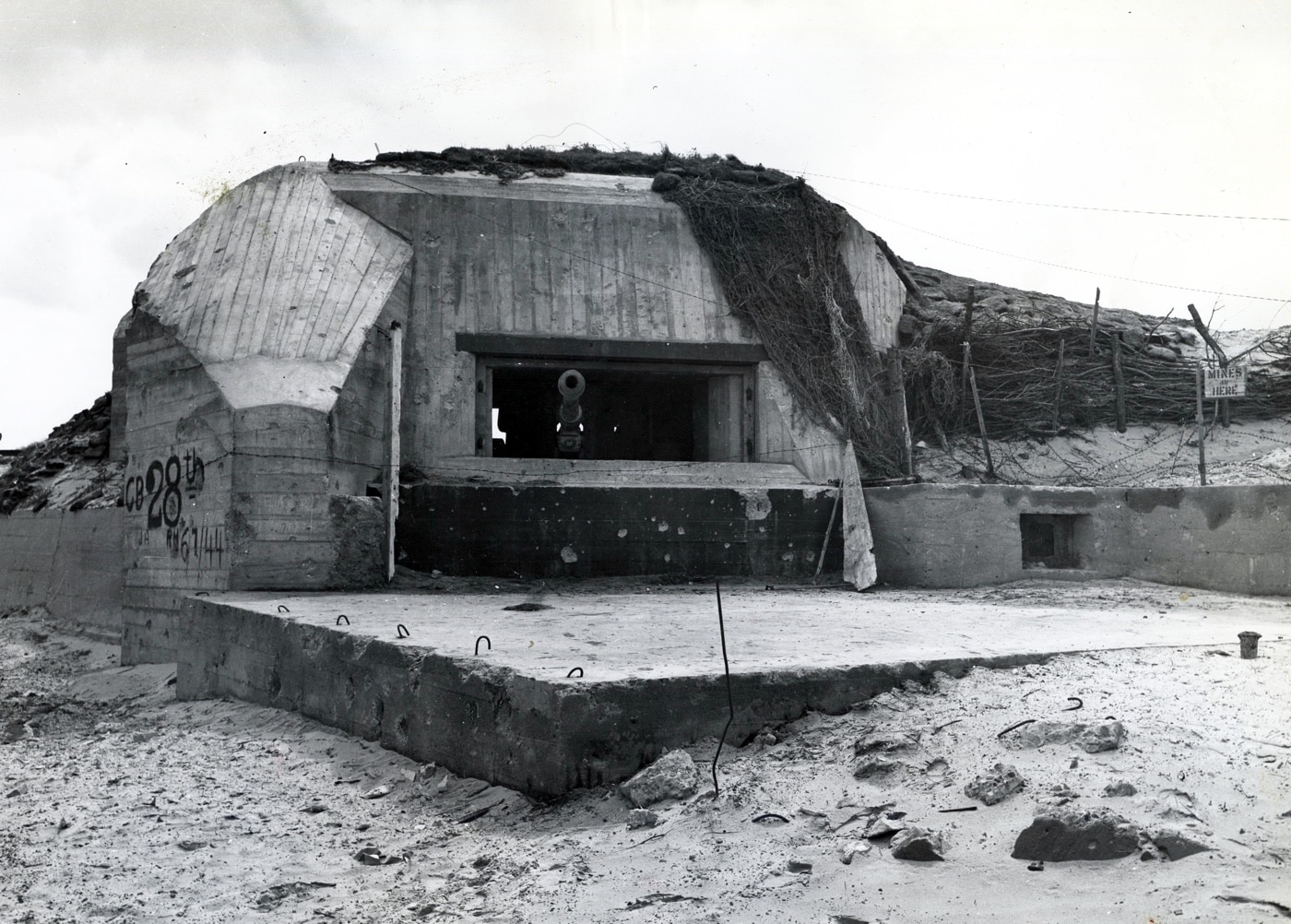
The business-end of aGerman 8.8 cm Pak 43/41in a concrete bunker on Utah Beach. The 88mm guns were highly effective. Image: NARA
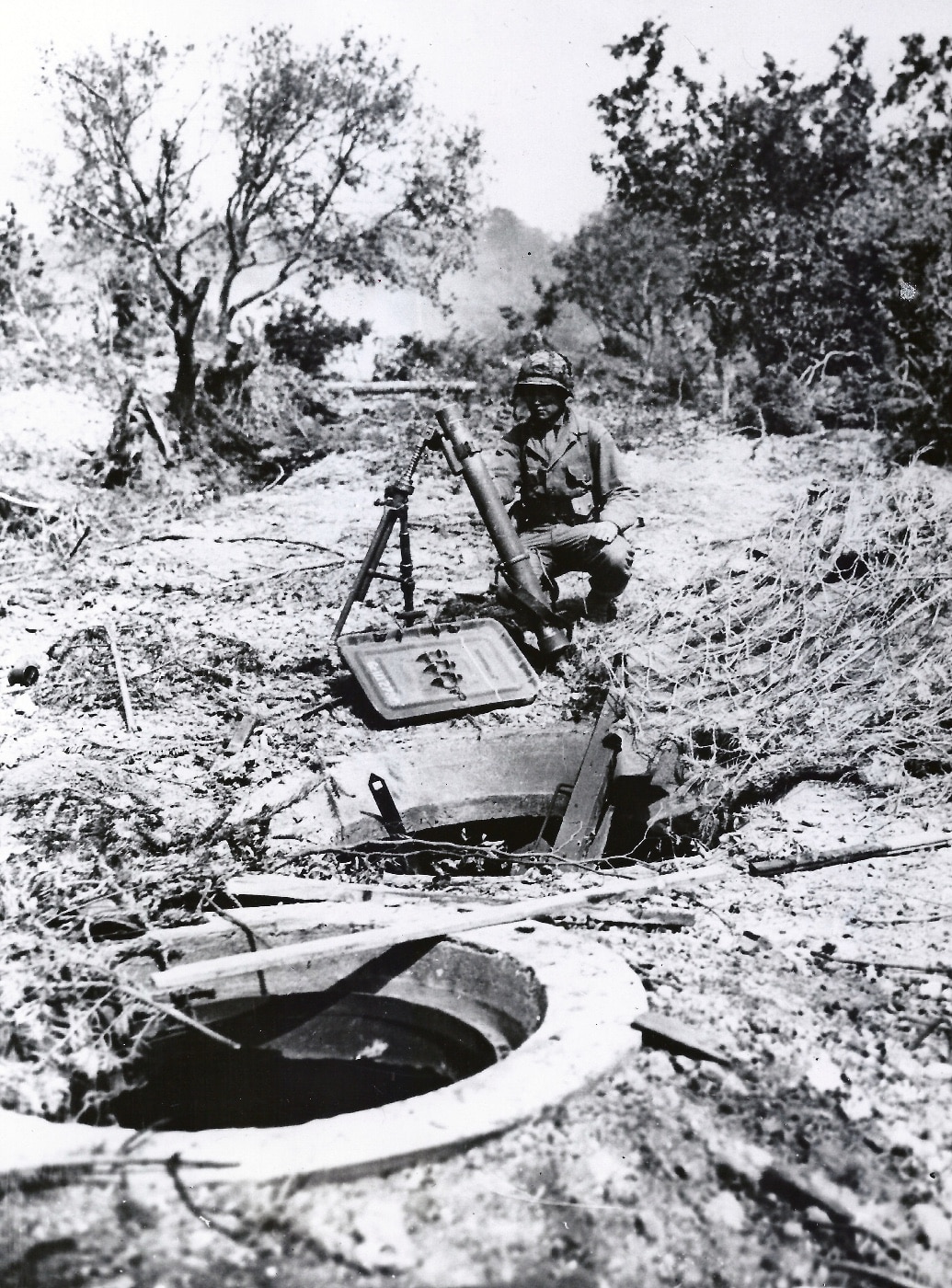
These defensive fighting positions called Tobruk pits were used by German teams near Cherbourg, France. Image: NARA
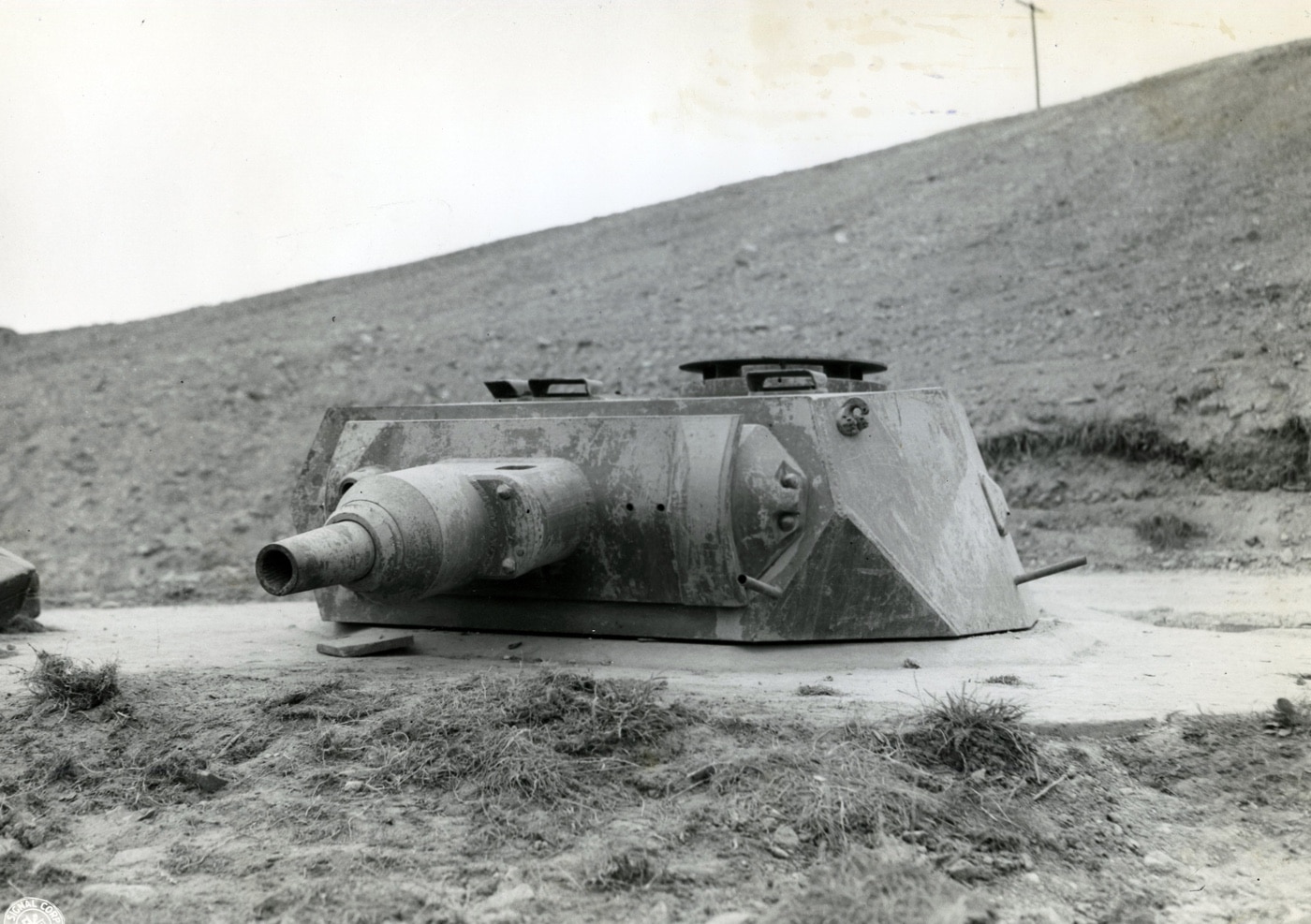
Germans fashioned defensive bunkers using tank turrets. This turret was designed for the VK 30.01 (H) (also known as the VK3001) fitted with a 7.5 cm KwK L/24 gun. Image: NARA
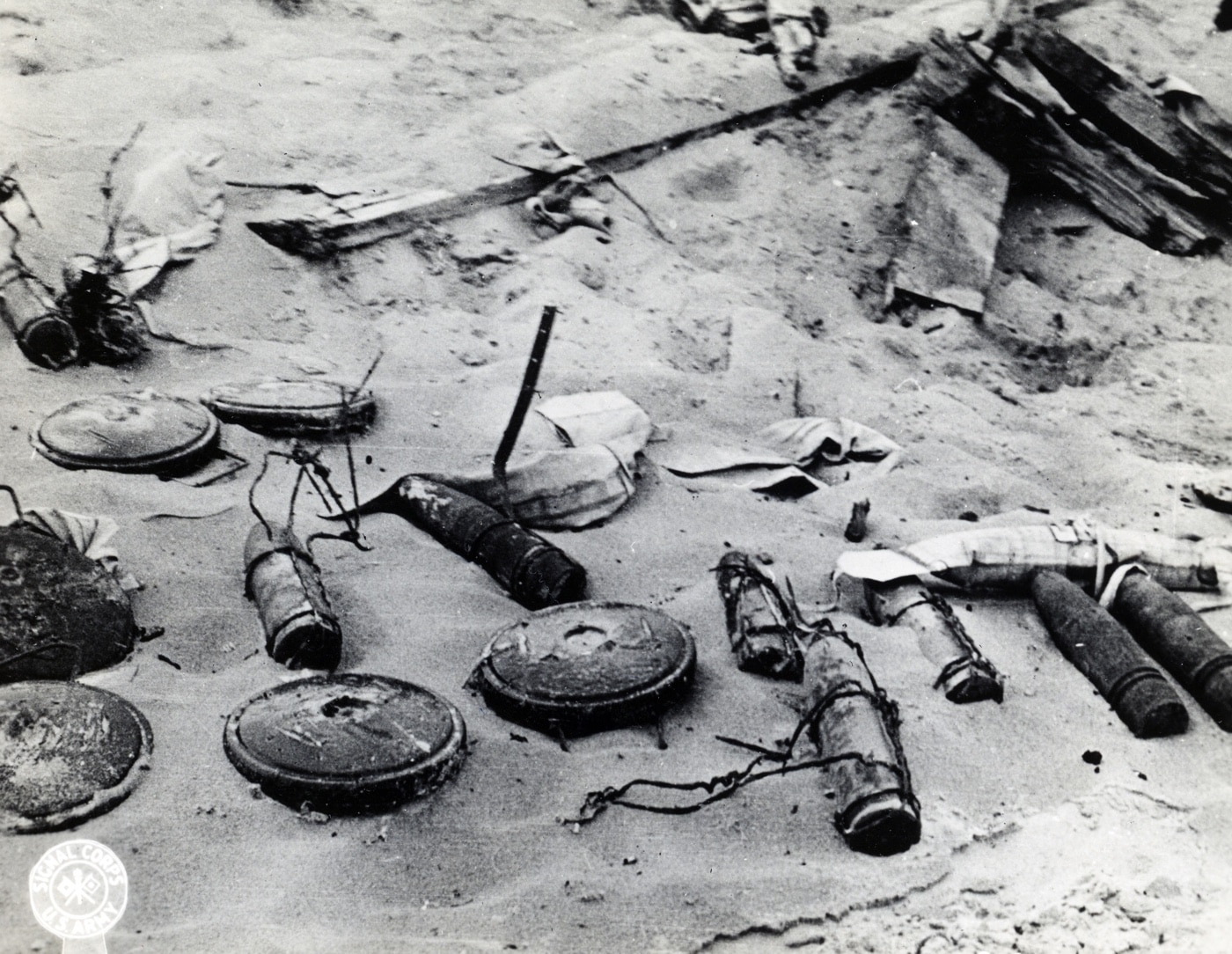
American engineers removed a variety of German Tellermines and remotely detonated 150mm shells from the beaches of Normandy. Image: NARA
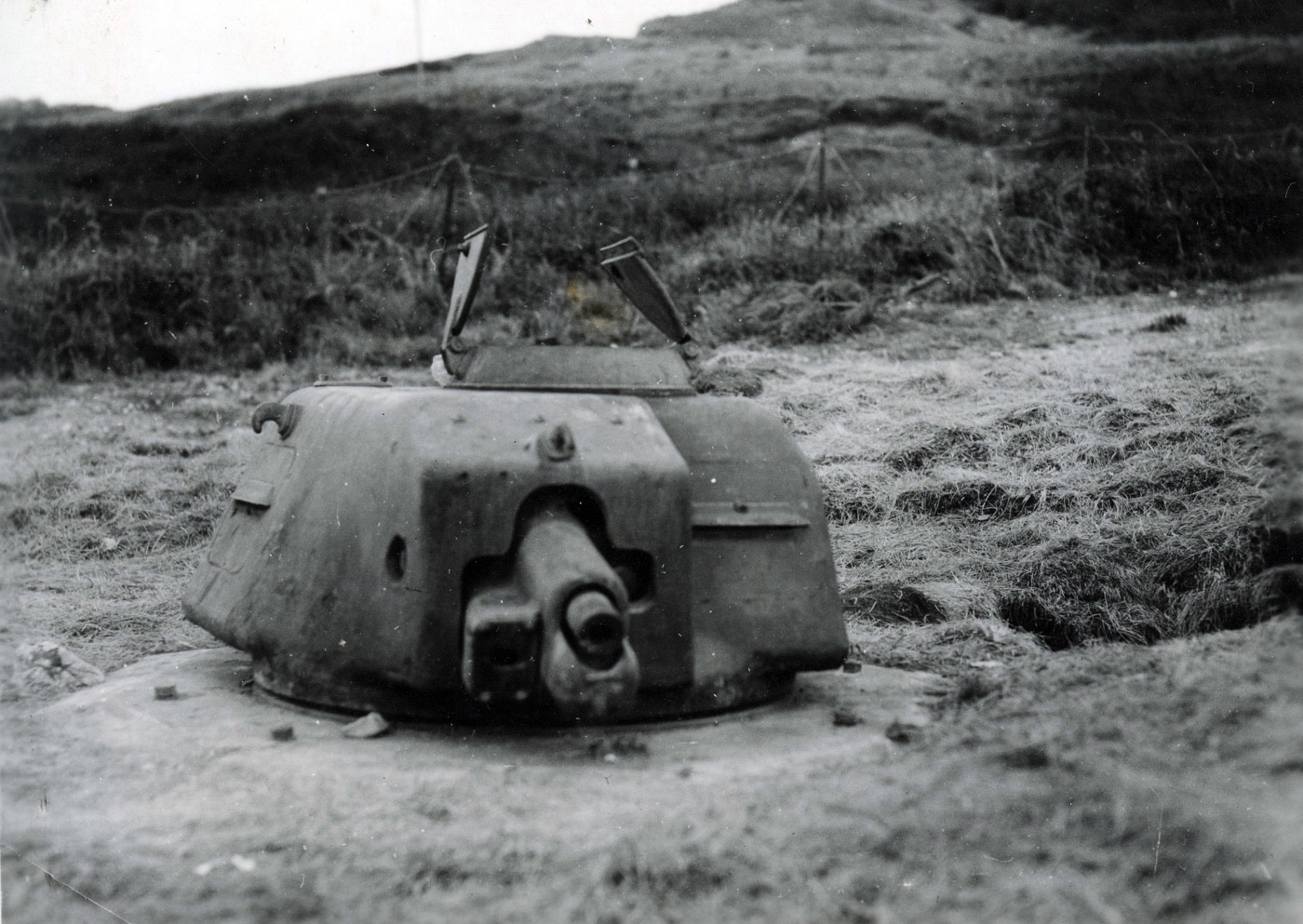
The Germans emplaced turrets from captured French light tanks atop concrete shelters. This turret taken from a Renault R35 infantry tank mounts a 37mm L/21 Puteaux SA 18 gun. Image: NARA
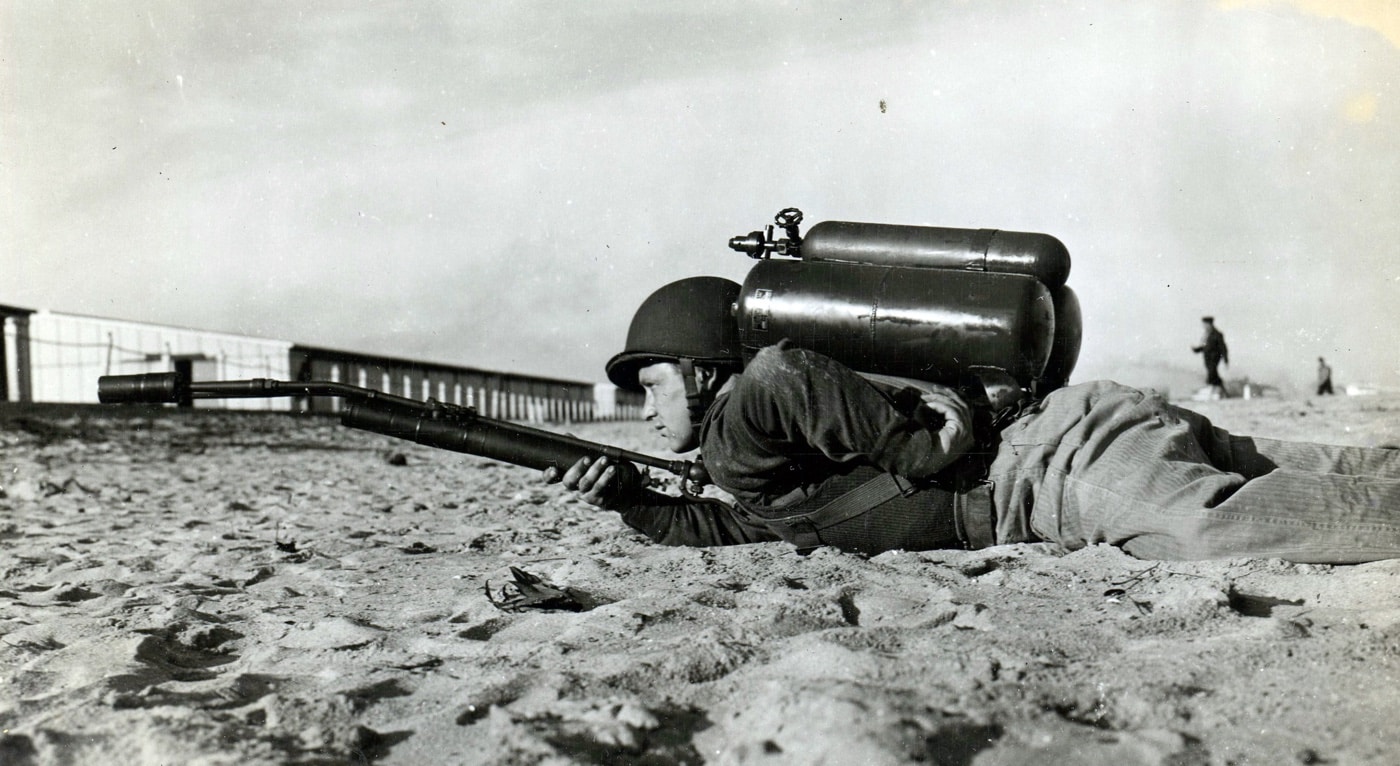
Often difficult to light, the use of lesser fuels and low pressure dogged the American M1 flamethrower, giving it an effective range of just 15-20 yards. Image: NARA
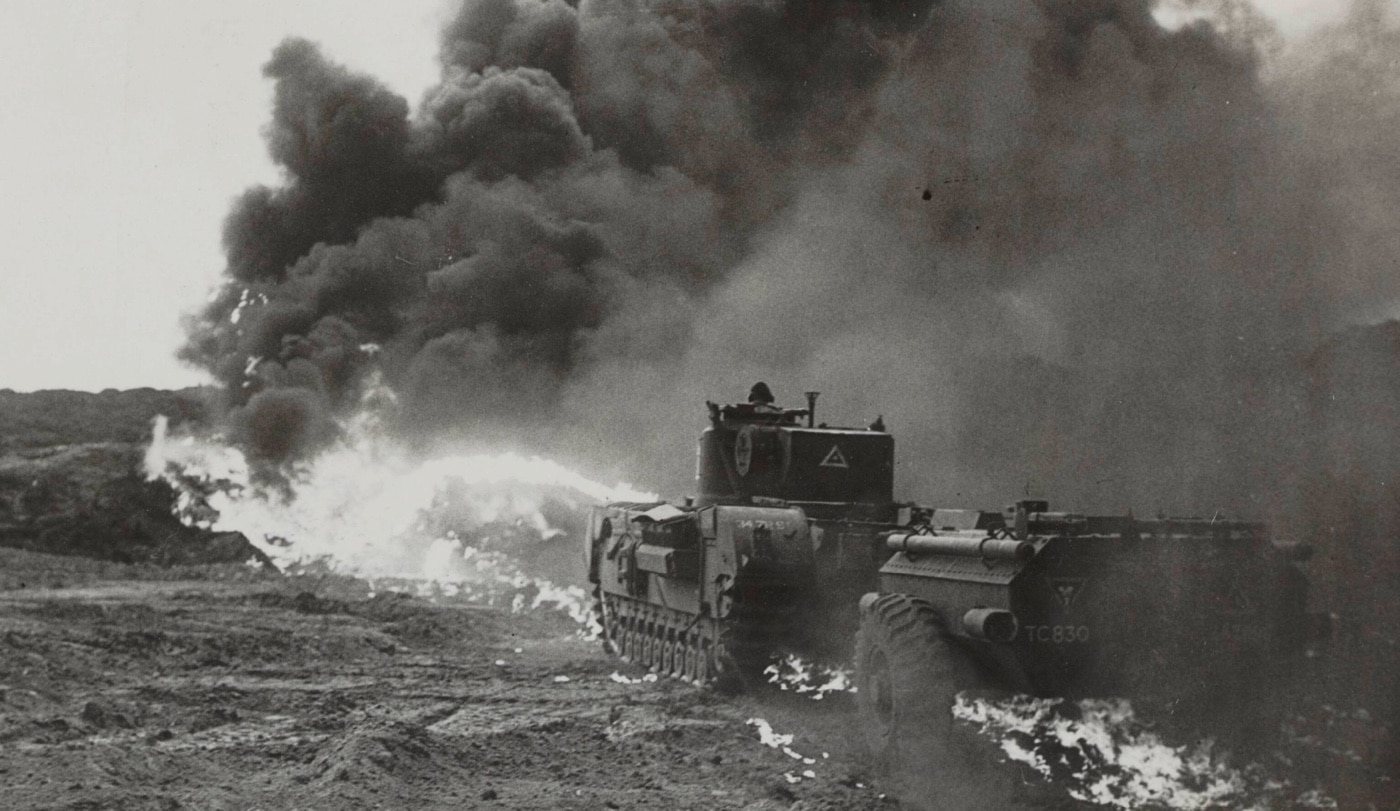
A Churchill Crocodile flame-throwing tank demonstrated its capabilities during training. An earlier version of the tank was used in the failed Dieppe Raid.

A German Abwehrflammenwerfer 42, or flame fougasse, was a remote-control flamethrower. Here it sticks out of the sand near a bunker at Fort de Foucarville. Image: NARA

The German Abwehrflammenwerfer 42 produced flame about 5 yards wide and 3 yards high. It was based on the Soviet FOG-1 and likely influenced by theGrossflammenwefer. Image: NARA
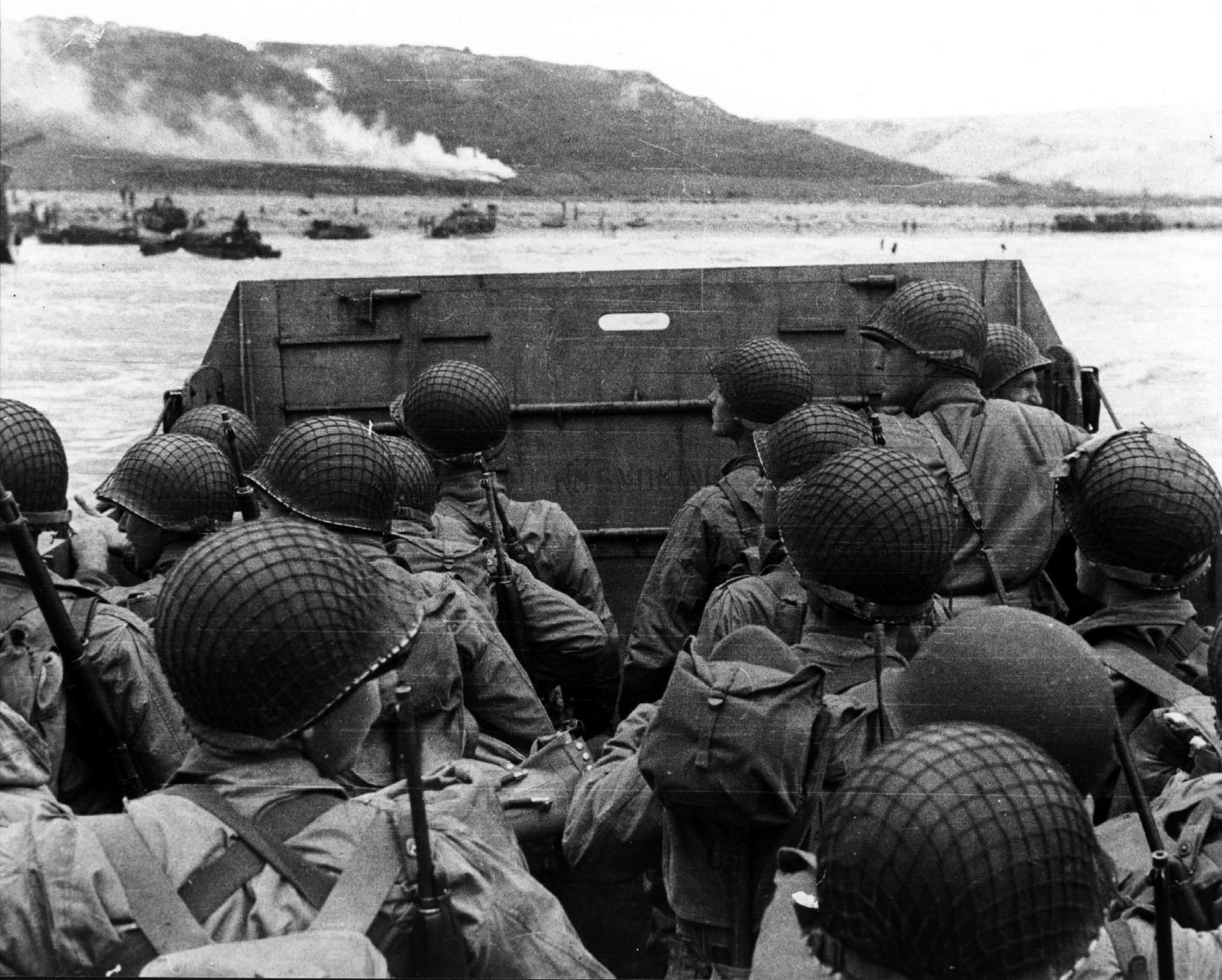
These American troops were part of the 156,000 Allied soldiers to storm the beaches in Normandy, France. Their efforts helped to shorten World War II and liberate Europe.




